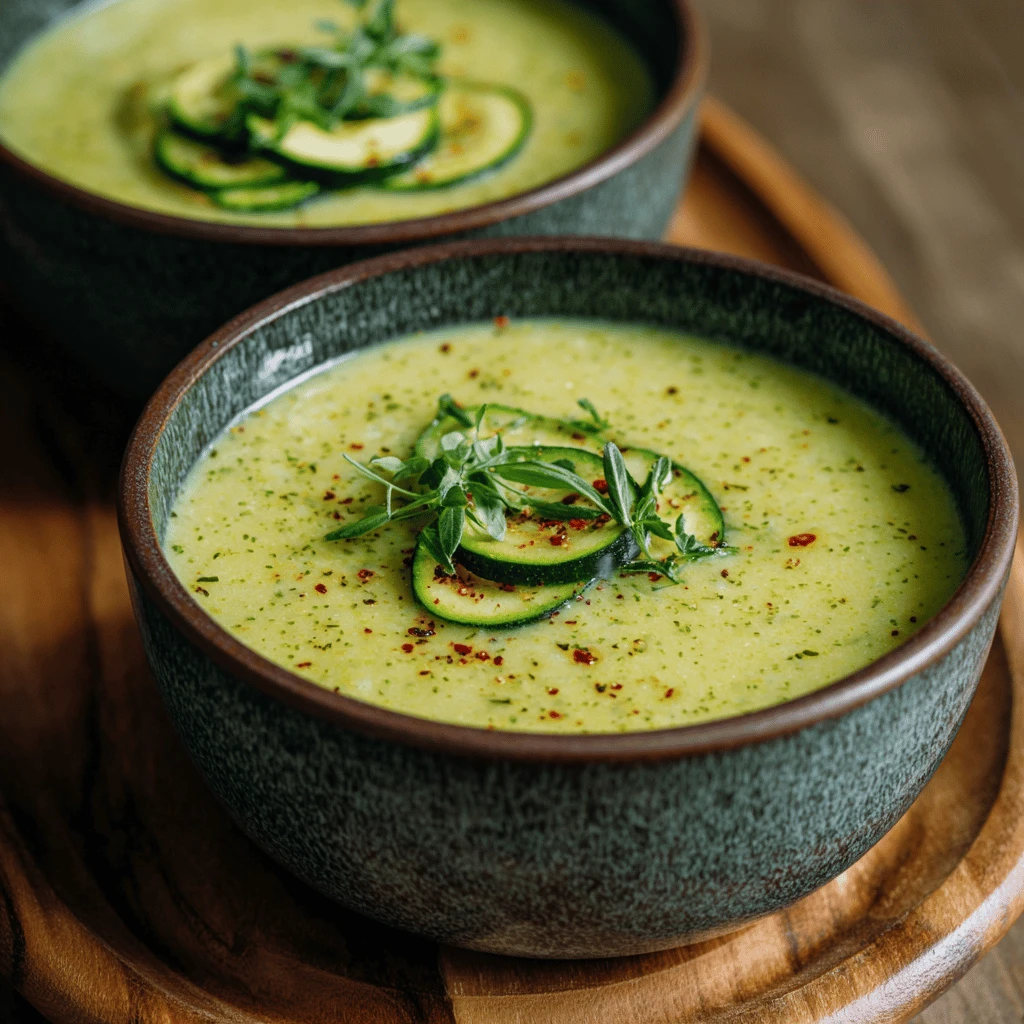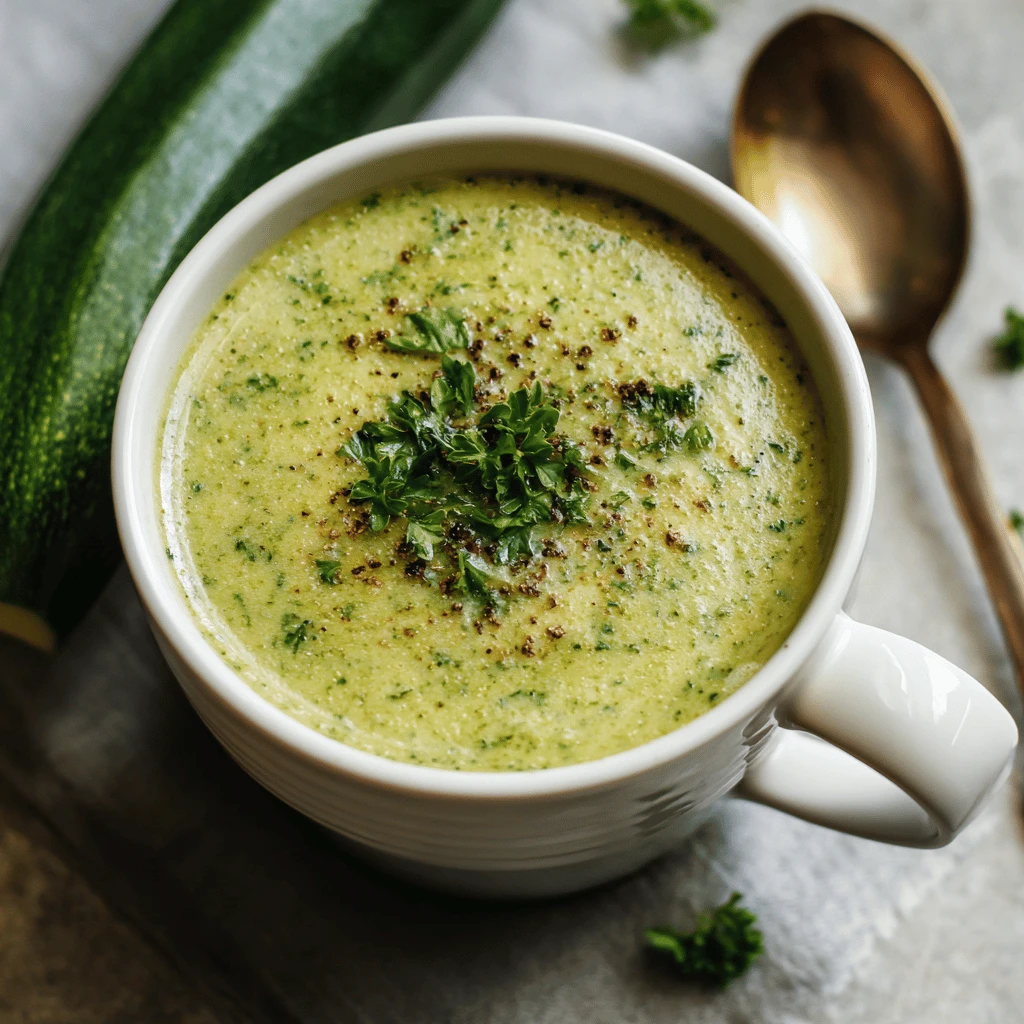Meal Prep Low Carb Zucchini Soup
Zucchini soup offers a delicious and versatile canvas for low-carb meal prep. Whether you’re following a ketogenic diet, managing blood sugar, or simply aiming to reduce your carbohydrate intake, this creamy and comforting soup can be easily customized to fit your needs. This comprehensive guide will walk you through the process of creating a flavorful, satisfying, and meal-prep-friendly low-carb zucchini soup, offering tips and variations to keep things interesting.
The Benefits of Low Carb Zucchini Soup
Low-carb zucchini soup offers several advantages, making it an excellent choice for health-conscious individuals:
- Low in Carbohydrates: Zucchini is naturally low in carbs, making it a great base for a keto-friendly soup. By minimizing high-carb additions like potatoes or excessive amounts of cream, you can keep the carbohydrate count per serving very low.
- Rich in Nutrients: Zucchini is packed with vitamins and minerals, including vitamin C, vitamin B6, and potassium. It also contains antioxidants, which help protect your cells from damage.
- High in Fiber: Fiber promotes digestive health and helps you feel full and satisfied, making it easier to manage your weight.
- Versatile and Customizable: Zucchini soup can be easily adapted to suit your taste preferences. You can add different herbs, spices, proteins, and vegetables to create a variety of flavor profiles.
- Perfect for Meal Prep: This soup can be made in large batches and stored in the refrigerator or freezer for quick and easy meals throughout the week.
Crafting the Perfect Low Carb Zucchini Soup
The key to a delicious low-carb zucchini soup lies in using high-quality ingredients and focusing on building flavor. Here’s a step-by-step guide to help you create a winning recipe:
Ingredients:
- Zucchini: The star of the show! Choose firm, medium-sized zucchinis for the best flavor and texture. Aim for about 2-3 pounds.
- Aromatic Base: Onions, garlic, and celery form the foundation of the soup’s flavor. Sautéing them in olive oil or butter before adding the other ingredients will enhance their sweetness and depth.
- Broth: Use chicken broth or vegetable broth as the liquid base. Opt for low-sodium varieties to control the salt content. Bone broth is another excellent option for added nutrients and flavor.
- Healthy Fats: Incorporating healthy fats adds richness and satiety to the soup. Options include olive oil, butter, coconut milk, heavy cream, or avocado. Use these sparingly if carb count is a concern.
- Herbs and Spices: Experiment with different herbs and spices to customize the flavor profile. Popular choices include basil, thyme, oregano, parsley, dill, chili flakes, cumin, and smoked paprika.
- Protein (Optional): Add protein to make the soup more substantial and satisfying. Cooked chicken, sausage, bacon, shrimp, or tofu are all great options.
- Cheese (Optional): A sprinkle of Parmesan cheese, feta cheese, or goat cheese can add a tangy and savory element to the soup.
- Salt and Pepper: Season to taste. Remember that the broth may already contain salt, so add it gradually.
Instructions:
1. Prepare the Vegetables: Wash and chop the zucchini, onion, garlic, and celery.
2. Sauté the Aromatics: Heat olive oil or butter in a large pot or Dutch oven over medium heat. Add the onion, garlic, and celery and sauté until softened, about 5-7 minutes.
3. Add Zucchini and Broth: Add the zucchini and broth to the pot. Bring to a boil, then reduce heat and simmer for 15-20 minutes, or until the zucchini is tender.
4. Blend the Soup: Use an immersion blender to blend the soup until smooth and creamy. Alternatively, carefully transfer the soup to a regular blender in batches and blend until smooth.
5. Add Flavor and Texture: Stir in the healthy fats, herbs, spices, and protein (if using). Season with salt and pepper to taste.
6. Garnish and Serve: Garnish with cheese, fresh herbs, or a swirl of cream (optional). Serve hot.
Tips for Maximizing Flavor:
- Roast the Zucchini: Roasting the zucchini before adding it to the soup will enhance its natural sweetness and add a smoky flavor. Toss the zucchini with olive oil, salt, and pepper and roast at 400°F (200°C) for 20-25 minutes.
- Bloom the Spices: Toast the spices in the pot before adding the other ingredients to release their aromas and flavors.
- Use High-Quality Broth: A good quality broth is essential for a flavorful soup.
- Don’t Overcook the Zucchini: Overcooked zucchini can become mushy and lose its flavor. Cook it just until it’s tender.
- Adjust the Consistency: If the soup is too thick, add more broth. If it’s too thin, simmer it for a few more minutes to allow some of the liquid to evaporate.
Variations and Adaptations
One of the best things about zucchini soup is its versatility. Here are some variations to inspire your culinary creativity:
- Creamy Zucchini Soup with Parmesan: Add a generous amount of grated Parmesan cheese to the soup during the last few minutes of cooking. The cheese will melt into the soup and add a rich, savory flavor.
- Spicy Zucchini Soup: Add a pinch of chili flakes or a dash of hot sauce to the soup for a kick of heat. You can also use a spicy sausage or chorizo as the protein source.
- Zucchini Soup with Coconut Milk: Substitute coconut milk for heavy cream to create a dairy-free and vegan-friendly version of the soup. The coconut milk will add a subtle sweetness and creaminess.
- Lemon Zucchini Soup: Add a squeeze of fresh lemon juice to the soup just before serving to brighten the flavors and add a tangy twist.
- Curried Zucchini Soup: Add curry powder, cumin, and coriander to the soup for a warm and aromatic flavor. You can also add a can of diced tomatoes for extra acidity.
- Zucchini Noodle Soup: Use a spiralizer to create zucchini noodles and add them to the soup during the last few minutes of cooking. This will add texture and make the soup more filling.
- Zucchini Soup with Pesto: Swirl a spoonful of pesto into the soup just before serving. The pesto will add a burst of fresh, herbaceous flavor.
Meal Prep and Storage
Zucchini soup is an ideal meal-prep option, making it easy to enjoy healthy and delicious lunches or dinners throughout the week.
Storage:
- Refrigerator: Allow the soup to cool completely before storing it in an airtight container in the refrigerator for up to 3-4 days.
- Freezer: For longer storage, freeze the soup in individual portions in freezer-safe containers or bags for up to 2-3 months. Thaw overnight in the refrigerator before reheating.
Reheating:
- Stovetop: Reheat the soup in a pot over medium heat, stirring occasionally, until heated through.
- Microwave: Reheat the soup in a microwave-safe bowl for 2-3 minutes, or until heated through, stirring occasionally.
Meal Prep Tips:
- Make a Large Batch: Cook a large batch of soup on the weekend and divide it into individual portions for easy grab-and-go meals during the week.
- Pre-Portion Toppings: Prepare toppings like cheese, herbs, or croutons in advance and store them separately to maintain their freshness.
- Pack with Protein: Add a side of grilled chicken, hard-boiled eggs, or a handful of nuts to your soup for a complete and balanced meal.
- Label and Date: Label each container with the date and contents to keep track of what’s in your refrigerator or freezer.
Troubleshooting and Common Mistakes
Even with the best intentions, things can sometimes go wrong in the kitchen. Here are some common mistakes to avoid when making low-carb zucchini soup:
- Overcooking the Zucchini: As mentioned earlier, overcooked zucchini can become mushy and lose its flavor. Cook it just until it’s tender.
- Using Too Much Liquid: Adding too much broth can result in a watery soup. Start with less broth and add more as needed to achieve the desired consistency.
- Forgetting to Season: Seasoning is crucial for a flavorful soup. Don’t be afraid to add salt, pepper, and other herbs and spices to taste.
- Blending the Soup Too Much: Over-blending the soup can make it gummy. Blend it just until it’s smooth and creamy.
- Adding High-Carb Ingredients: Be mindful of the ingredients you add to the soup. Avoid high-carb additions like potatoes, corn, or excessive amounts of cream if you’re trying to keep it low-carb.
FAQ About Low-Carb Zucchini Soup
Is zucchini soup keto-friendly?
Yes, zucchini soup can be keto-friendly as zucchini is low in carbohydrates. Be mindful of additional ingredients and avoid high-carb additions like potatoes, excessive amounts of carrots, or too much cream. Use low-carb thickeners such as cream cheese sparingly if needed.
How do I thicken zucchini soup without flour?
You can thicken zucchini soup by simmering it uncovered for a longer period to allow some of the liquid to evaporate. Alternatively, you can add a small amount of cream cheese, xanthan gum (use very sparingly!), or blend a portion of the soup separately and return it to the pot for a thicker consistency.
Can I freeze zucchini soup?
Yes, zucchini soup freezes well. Allow the soup to cool completely before transferring it to freezer-safe containers or bags. Leave some headspace in the containers as the soup will expand during freezing. It can be stored in the freezer for up to 2-3 months. Thaw it in the refrigerator overnight before reheating.
What can I add to zucchini soup to make it more flavorful?
To enhance the flavor of zucchini soup, consider adding sautéed onions, garlic, and celery as a base. Herbs like basil, thyme, or oregano, as well as spices like cumin, chili powder, or smoked paprika, can add depth. A squeeze of lemon juice can brighten the flavor. Cheese like parmesan, feta, or goat cheese provides a savory element.
How do I prevent zucchini soup from being watery?
To prevent zucchini soup from becoming too watery, avoid adding too much broth initially. Start with a smaller amount and add more as needed to achieve the desired consistency. Roasting the zucchini beforehand can also help remove excess moisture.
What are good toppings for zucchini soup?
Good toppings for zucchini soup include a dollop of sour cream or Greek yogurt, a sprinkle of grated Parmesan cheese, fresh herbs like chopped parsley or chives, toasted pumpkin seeds or nuts, and a drizzle of olive oil. Crispy bacon bits or croutons (if not strictly low-carb) can also add texture and flavor.




